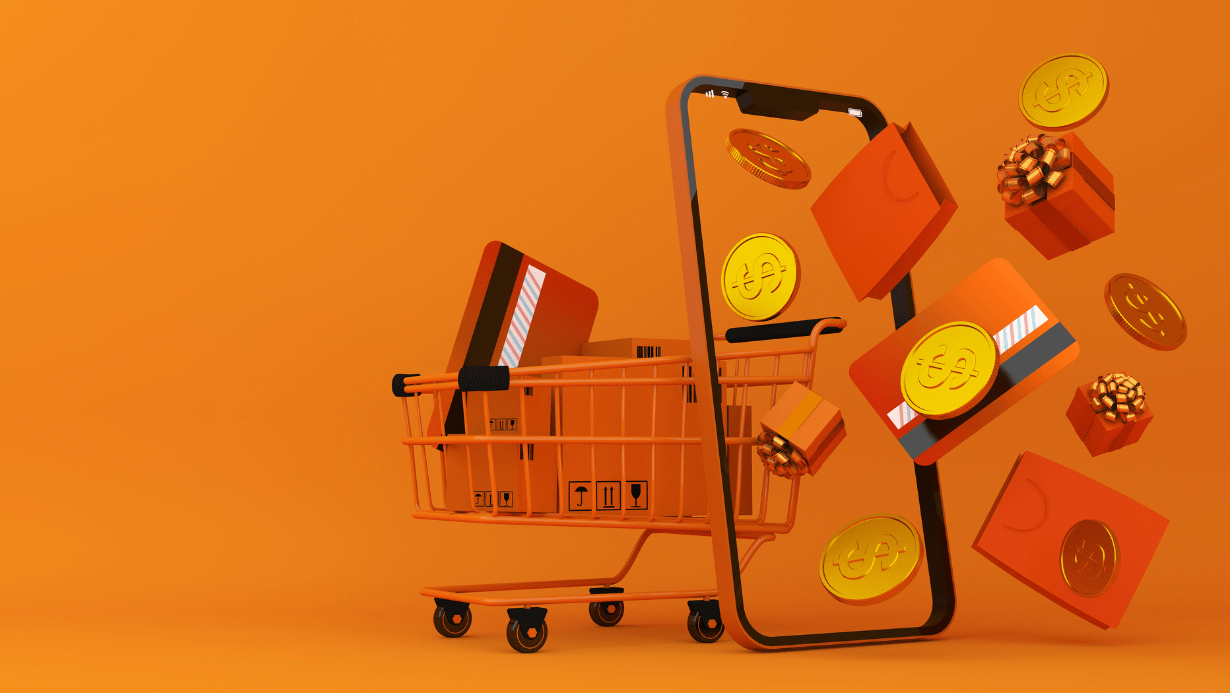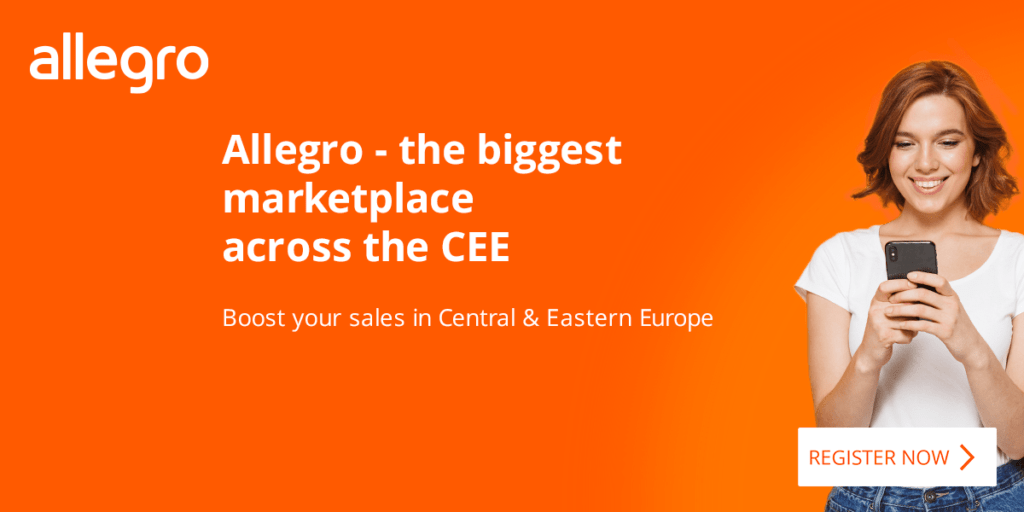How to sell more in CEE in 2024
Written by
Editorial TeamPublished on

Ready to make your online shop the talk of the town in Central and Eastern Europe in 2024?
We’ve got some nifty tricks up our sleeve just for you.
Our insights will equip you with the tools needed to thrive in the competitive landscape of Central and Eastern Europe’s e-commerce sector in 2024.
Without further ado, let’s check them out!
#1 Leverage Local Marketplaces
Using local marketplaces is one of the best things you can do to boost online sales in Central and Eastern Europe.
For example, Allegro in Poland is a big player in this area.
It has more than 128,000 sellers from across the CEE and beyond and is the top choice for 82% of online shoppers in Poland. At the end of Q3 2023, Allegro had 14.5 million active buyers, showing how important it is in online shopping (Statista).

Starting and growing an online business can be easier on these marketplaces than making your own online store. These platforms already have lots of customers, so you don’t need to spend as much time and money to find new buyers.
Also, people like to shop on marketplaces for several reasons:
- They can easily compare prices and choices from various sellers.
- These well-known marketplaces are trusted by shoppers, which helps them feel safe when buying.
- They find it convenient to see many different products in one place.
- They appreciate the variety of delivery and payment options offered by marketplaces.
This strategy is solid for reaching more customers in the Central and Eastern European online market. It uses the strengths of these marketplaces to connect with a growing number of online shoppers.
A checklist for e-commerce owners:
- Market research. Identify the most popular marketplaces in your target CEE countries and understand their customer demographics and preferences. Our article on CEE customer preferences might be of help here.
- Competitive pricing strategy. Analyze competitor pricing on these platforms to ensure your products are competitively priced.
- Optimize product listings. Create detailed and SEO-friendly product descriptions, high-quality images, and utilize keywords relevant to the CEE market.
- Customer service excellence. Develop an effective system for customer queries and feedback to build both trust and reputation on the marketplace.
- Analyze and adapt. Review sales data, product offerings, marketing tactics, and customer feedback to adapt your strategy.
#2 Localize Your Content
In CEE, adapting your website and marketing materials to resonate with local languages and cultural nuances is a strategic move.
This process, known as website or content localization, is more than just translating text. It involves a deep understanding of local customs, values, and consumer behavior.
The goal for you is to create an online presence that feels familiar and appealing to each specific audience. You simply respect your customers’ cultural identity by localizing your content in their language.
A brand’s sensitivity can enhance its appeal and encourage a deeper connection with its audience. It’s about creating marketing materials that feel custom-made for each market, which might in turn increase engagement, trust, and sales.
A well-localized website can be invaluable in breaking down cultural barriers and building a strong, loyal customer base. It’s an investment in creating a CEE-friendly brand with a local touch, which is increasingly important in today’s interconnected world.

A checklist for e-commerce owners:
- Conduct cultural research. Understand the cultural norms and preferences of your target market.
- Hire local experts. Engage with local translators and cultural advisors.
- Customize visual content. Adapt images and design elements to reflect local tastes.
- Localize SEO strategies. Use region-specific keywords and phrases. For example, Slovak and Czech might sound similar, but they have quite a few differences.
- Monitor and adapt. Continuously gather feedback and refine your approach.
#3 Offer Diverse Payment Options
Central and Eastern European consumers prefer distinct payment methods for e-commerce, so offering a range of these methods is necessary for capturing their market.
The payment landscape here is characterized by a mix of traditional and modern preferences, with some countries favouring digital transactions while others still rely on cash-based methods. We’ve covered them in our previous blog post on CEE payment methods.
Incorporating local payment options, such as bank transfers, mobile payments, and local credit card systems, alongside international payment options, can reduce abandonment rates.
On top of that, offering diverse payment options can enhance your business’s credibility and trustworthiness, as customers feel more secure when they see familiar and convenient payment methods.
A checklist for e-commerce owners:
- Research local payment methods. Identify the most popular payment methods in each target country.
- Integrate multiple options. Include a range of payment methods, from traditional to digital.
- Ensure security. Implement necessary security measures for all payment methods.
- User-friendly interface. Make the payment process simple and intuitive.
- Stay updated. Regularly revise and expand your payment options based on market trends.
#4 Introduce Efficient Delivery Systems
The CEE presents unique logistical challenges and opportunities, with customers expecting fast, reliable, and cost-effective delivery options. You can read more about that in one of our blog posts.
To meet these expectations, develop a delivery network that is both strong and flexible. You can greatly increase the efficiency of your delivery process by partnering with local carriers who understand the regional logistics landscape.
You can then gain valuable insight into local delivery preferences, such as preferred delivery times, pickup points, and return policies.
This technology optimizes the delivery process and provides transparency and reassurance to customers – who can track their orders from dispatch to delivery.
You can use fulfillment services like Allegro One Fulfillment to expand that even more. This comprehensive service includes storing, packaging, and delivering products, as well as customer support throughout the delivery process.
It’s a game-changer for merchants looking to establish their presence in the CEE region, as it offers faster delivery times and more attractive conditions – thus boosting sales.
With Allegro One Fulfillment, nearly 80% of orders are delivered within 1-2 days, and it even includes eco-friendly packaging options – a smart and sought-after choice for both efficiency and sustainability.

A checklist for e-commerce owners:
- Partner with local companies. Collaborate with carriers that have a strong presence in your target regions.
- Offer multiple delivery options. Provide choices like express delivery, standard shipping, and in-store pickup. The more, the merrier.
- Implement tracking systems. Allow customers to track their orders in real-time.
- Focus on packaging. Packaging should be secure and appropriate for each product.
- Make improvements. Get regular feedback from customers on delivery experiences.
#5 Invest in Customer Education
Customer education involves providing comprehensive information that helps consumers understand not only what they are buying but also why they need it.
Educating customers can take various forms, from detailed product descriptions and how-to guides to informative blog posts and instructional videos.
As a result, your customers are empowered to make informed decisions, which can lead to fewer returns and higher customer satisfaction.
And then, well-informed customers are more likely to appreciate the value of your products, leading to higher conversion rates and repeat purchases. In a market where consumers are bombarded with choices, being the brand that educates and informs can set you apart. For a long time.
A checklist for e-commerce owners:
- Develop comprehensive product guides. Create detailed guides that explain the features and benefits of your products.
- Use multimedia formats. Leverage videos, infographics, and webinars for engaging educational content.
- Create a FAQ section. Address common customer queries and concerns, wherever applicable.
- Offer expert advice. Share insights and best practices related to your products or industry.
- Adapt to changes. Enhance your educational materials based on customer feedback.
#6 Create Online Communities
A strong community creates a platform for customers to engage with each other and your brand.
Community building is about creating a space where customers feel heard, valued, and connected to your brand.
You can learn a lot about customer preferences and behaviour from this engagement, and that can help with your marketing and product development.
This can be achieved through social media groups, online forums, or even interactive features on your website.
By creating a community, you encourage word-of-mouth marketing, enhance customer loyalty, and create advocates for your brand. Also, forums and groups can be used for marketing, such as sharing exclusive updates. The sense of belonging communities provide can motivate customers to return.
Your brand’s strongest asset can be its community.
A checklist for e-commerce owners:
- Establish online platforms. Create places where customers can interact.
- Encourage user-generated content. Motivate customers to share their stories.
- Host virtual events. Organize webinars, Q&A sessions, or live chats.
- Provide exclusive offers. Reward community members with special deals or early access to new products.
- Regularly engage with the community. Actively participate in discussions. Be proactive rather than reactive.
#7 Continuously Innovate Products or Services
Being innovative is key to capturing discerning consumers’ attention in CEE’s e-commerce landscape. The goal of innovation in product offerings isn’t just to create something new, but to add value that resonates. Customers in CEE expect that.
This could mean developing products that solve specific problems, using cutting-edge technology, and reimagining existing products in a brand-new way.
Innovative products often create buzz and can position your brand as a leader in your industry. They can also open up new markets and customer segments, driving growth and profitability. In a market where consumers are constantly looking for the next big thing, innovative product offerings are valuable differentiators.
A checklist for e-commerce owners:
- Conduct market research. Be aware of emerging trends and customer needs.
- Develop a culture of innovation. Encourage creativity within your team.
- Collaborate with innovators. Partner with designers, inventors, or tech startups.
- Test new ideas. Use beta testing or limited releases to gauge customer interest.
- Gather customer feedback. Use insights from customers to refine your offerings.
Over to you
We’ve shared all our secrets for making it big in Central and Eastern Europe’s e-commerce scene in 2024. Now, it’s time to roll up your sleeves and dive in. Mix and match these strategies, play around with them, and find what clicks for your brand. Good luck!


